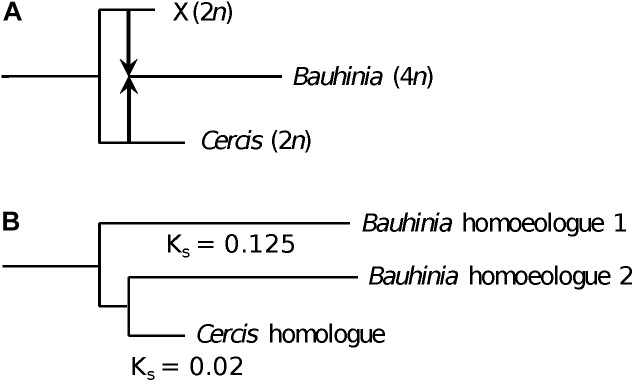FIGURE 8.
Allopolyploid origin of Bauhinia. (A) Species history, showing divergence between two diploid (2n) species: (1) the ancestor of Cercis and (2) a second species that became extinct (“X”). At some point after the species divergence, the two diploid species hybridized (arrows), followed by genome doubling to produce the allopolyploid (4n) ancestor of Bauhinia (and other Cercidoideae). (B) Representative gene tree sampled from Bauhinia and Cercis, showing the relationships of the single homologous gene in Cercis to the two homoeologs in allopolyploid Bauhinia. The Bauhinia homoeolog 2, contributed by the Cercis ancestor, is sister to the Cercis gene. The Cercis gene has a Ks of ∼0.145 compared with the Bauhinia homeolog 2; and each Bauhinia homoeolog has a Ks of 0.25 with respect to the other Bauhinia homoeolog. The relationship between the species history and the gene tree is complicated by the hypothesized slower substitution rate in Cercis.

